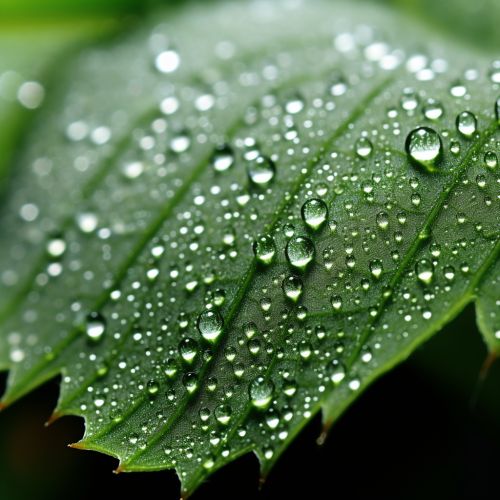Mechanisms of Plant Defense Against Stress and Pests
Introduction
Plants, unlike animals, cannot move to escape environmental stress or pests. Therefore, they have evolved a variety of defense mechanisms to protect themselves from these threats. These mechanisms can be broadly divided into two categories: constitutive defenses, which are always present, and induced defenses, which are activated in response to stress or pest attack.
Constitutive Defenses
Constitutive defenses are the first line of defense in plants and are always present, irrespective of whether the plant is under stress or attack by pests. These defenses include physical barriers such as thorns, spines, and trichomes, as well as chemical defenses such as the production of toxic or deterrent secondary metabolites.


Physical Barriers
Physical barriers are the most basic form of plant defense. These can be as simple as a tough, waxy cuticle that prevents water loss and inhibits the penetration of pathogens, or as complex as specialized structures like thorns and spines that deter herbivores. Another important physical defense is the presence of trichomes, which are hair-like structures on the plant surface that can deter pests by impeding their movement or by acting as a physical barrier to infection.
Chemical Defenses
Chemical defenses in plants involve the production of a wide range of secondary metabolites that can deter herbivores or inhibit the growth of pathogens. These compounds can be broadly classified into several groups, including alkaloids, phenolics, terpenoids, and glucosinolates, each of which has a unique mode of action and spectrum of activity. For example, some alkaloids act as neurotoxins, disrupting the nervous system of herbivores, while some phenolics have antimicrobial properties, inhibiting the growth of pathogens.
Induced Defenses
Induced defenses are activated in response to stress or pest attack. These defenses include the production of defensive proteins and secondary metabolites, as well as changes in plant physiology and morphology.
Defensive Proteins and Secondary Metabolites
Upon attack by pests or pathogens, plants can rapidly produce a variety of defensive proteins and secondary metabolites. These include pathogenesis-related (PR) proteins, which have antimicrobial properties, and phytoalexins, which are antimicrobial compounds produced in response to pathogen attack. In addition, plants can produce a variety of other defensive compounds, such as protease inhibitors that inhibit the digestive enzymes of herbivores, and volatile organic compounds that can attract natural enemies of the pests.
Changes in Plant Physiology and Morphology
In response to stress or pest attack, plants can undergo changes in their physiology and morphology that help them cope with these threats. For example, plants can close their stomata to prevent water loss during drought, or to prevent the entry of pathogens. They can also alter their growth patterns, for example by producing more roots in response to nutrient stress, or by changing the timing of their flowering to avoid attack by pests.
Plant-Pathogen Interactions
The interaction between plants and pathogens is a complex and dynamic process, involving a continuous co-evolutionary arms race. When a pathogen attacks a plant, the plant responds by activating its defense mechanisms. However, pathogens have evolved strategies to overcome these defenses, such as the production of effector proteins that can suppress the plant's immune response. In turn, plants have evolved resistance genes that can recognize these effectors and trigger a strong defensive response, often leading to localized cell death (a process known as the hypersensitive response) to prevent the spread of the pathogen.
Conclusion
In conclusion, plants have evolved a wide range of defense mechanisms to protect themselves from environmental stress and pests. These defenses can be constitutive or induced, and involve a variety of physical and chemical barriers, as well as changes in plant physiology and morphology. The interaction between plants and pests or pathogens is a complex and dynamic process, involving a continuous co-evolutionary arms race.
